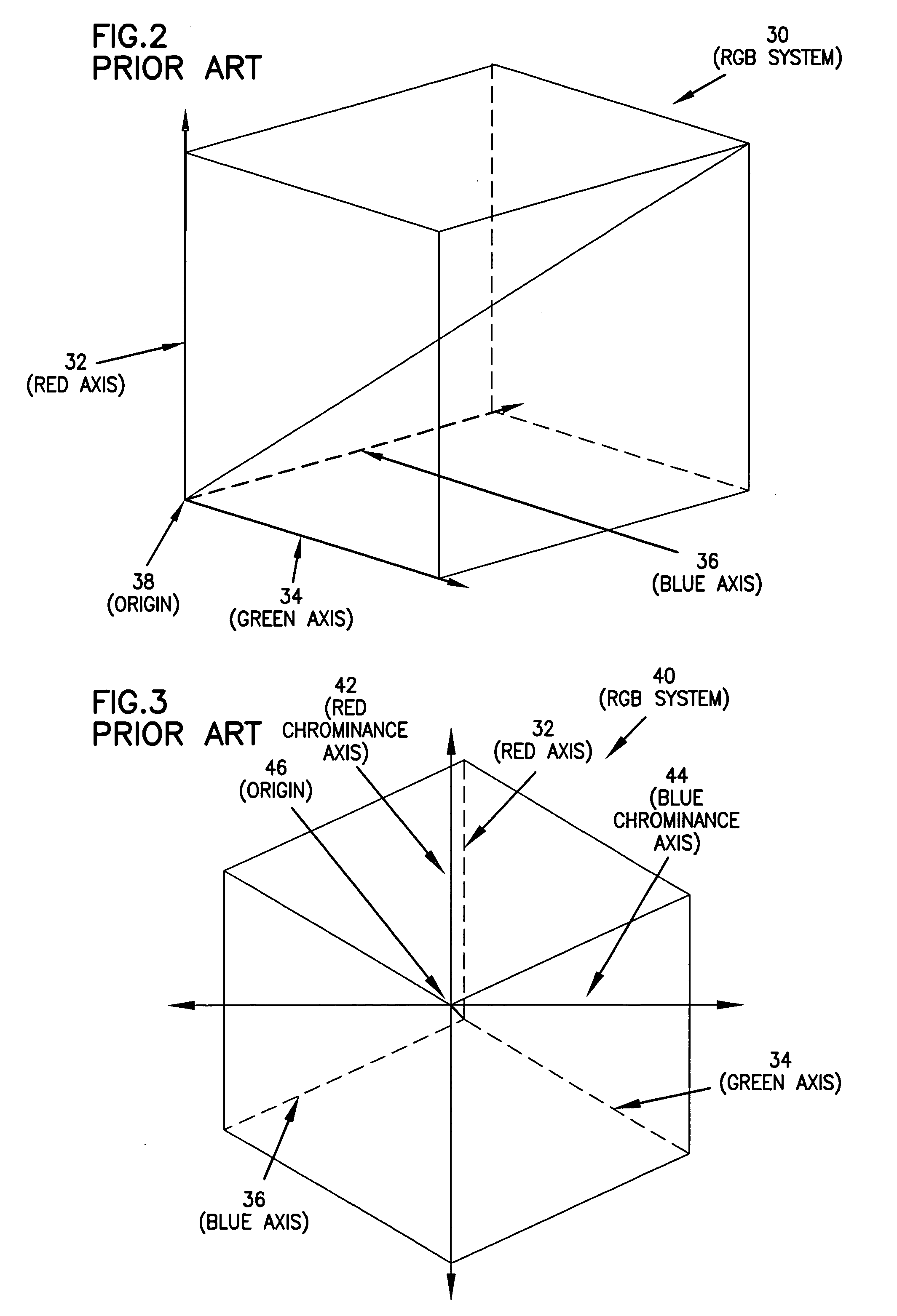Method and apparatus of detecting fire by flame imaging
a flame imaging and apparatus technology, applied in the direction of fire alarms, optical radiation measurement, instruments, etc., can solve the problems of flame image analysis being subject to false alarms, and being particularly troublesome in reflections
- Summary
- Abstract
- Description
- Claims
- Application Information
AI Technical Summary
Benefits of technology
Problems solved by technology
Method used
Image
Examples
Embodiment Construction
[0080]As noted previously, an apparatus 10 in according with the principles of the claimed invention is adapted to generate at least two first frames and a plurality of second frames, and to contemporaneously perform first and second processes therewith.
[0081]Referring to FIG. 1, an apparatus 10 in accordance with the principles of the claimed invention includes a video sensor 12. In a preferred embodiment of the apparatus, the video sensor 12 is a conventional digital video camera. This is convenient, in that it enables easy communication with common electronic components. However, it will be appreciated by those knowledgeable in the art that this choice is exemplary only, and that a variety of alternative video sensors 12 may be equally suitable, including but not limited to analog video cameras. In a preferred embodiment, the video sensor 12 is a color video sensor 12, adapted for obtaining color image, i.e. images that distinguish between different wavelengths of light. However,...
PUM
 Login to View More
Login to View More Abstract
Description
Claims
Application Information
 Login to View More
Login to View More - R&D
- Intellectual Property
- Life Sciences
- Materials
- Tech Scout
- Unparalleled Data Quality
- Higher Quality Content
- 60% Fewer Hallucinations
Browse by: Latest US Patents, China's latest patents, Technical Efficacy Thesaurus, Application Domain, Technology Topic, Popular Technical Reports.
© 2025 PatSnap. All rights reserved.Legal|Privacy policy|Modern Slavery Act Transparency Statement|Sitemap|About US| Contact US: help@patsnap.com



